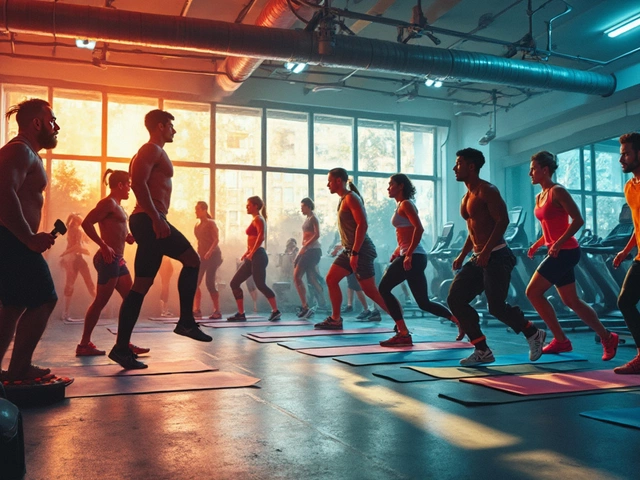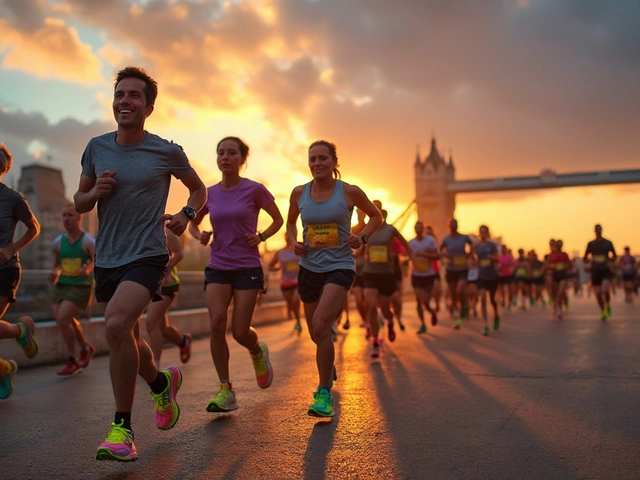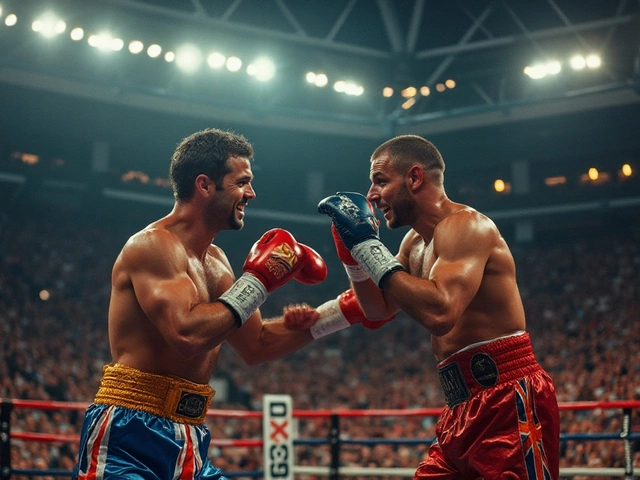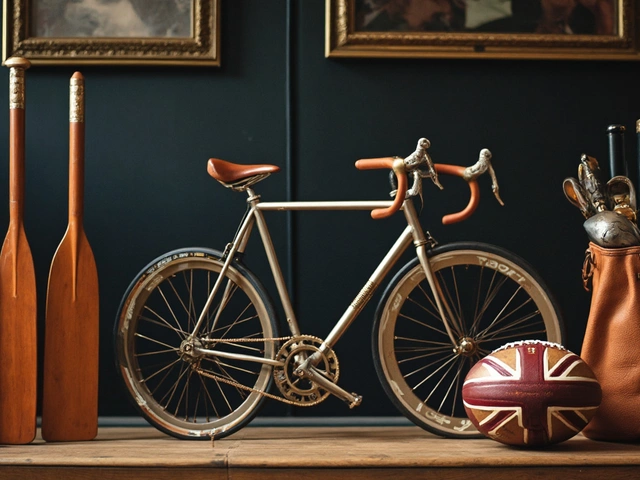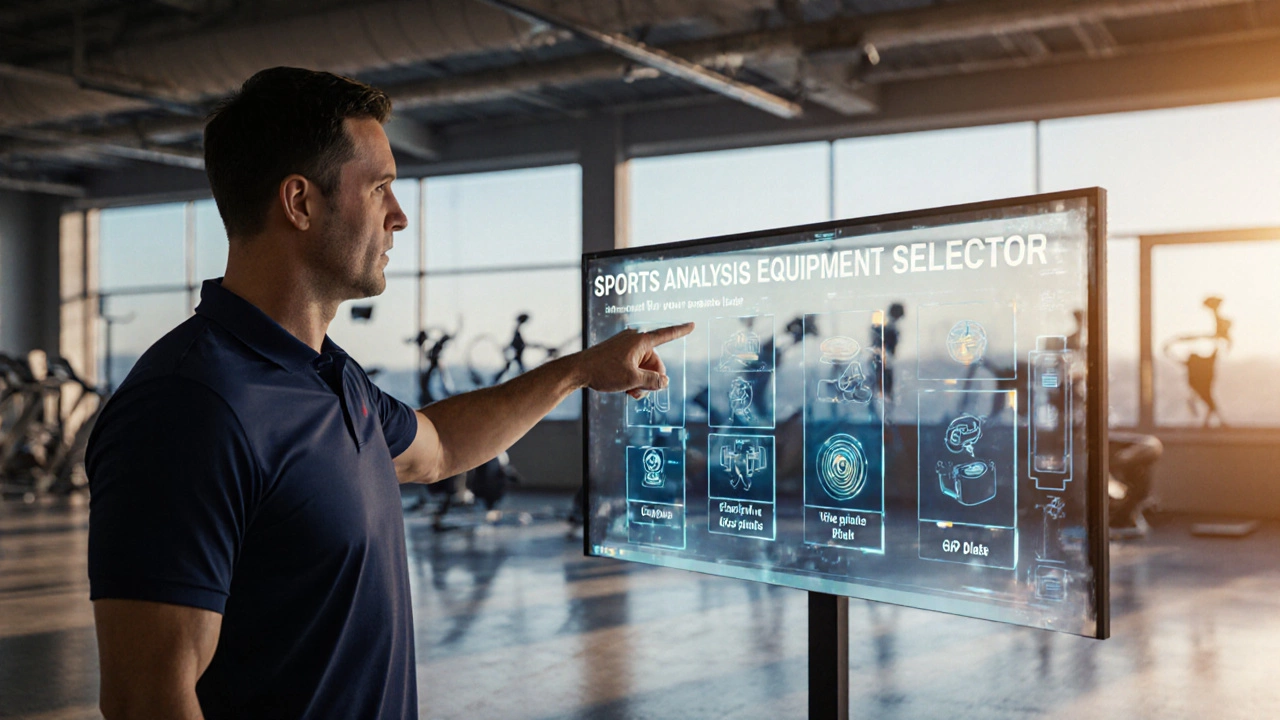
Sports Equipment October 1, 2025
Essential Sports Analysis Equipment Guide
Sports Analysis Equipment Selector
Coaches, analysts, and athletes constantly ask: which gear actually turns raw data into actionable insight? The answer lies in a mix of cameras, sensors, and specialty platforms that capture everything from a sprinter’s stride to a soccer ball’s spin. Below you’ll find the tools you need, why they matter, and how to pick the right bundle for your sport.
Key Points
- High‑frame‑rate video cameras and drones capture motion from every angle.
- GPS trackers and inertial measurement units (IMUs) deliver real‑time position and acceleration data.
- Heart‑rate monitors and EMG sensors reveal physiological stress and muscle activation.
- Force plates and pressure mats quantify ground‑reaction forces for technique tweaks.
- Eye‑tracking glasses and LIDAR scanners add contextual awareness for tactical analysis.
Let’s break down each category, highlight the most common models, and show how they fit together in a typical analysis workflow.
Video Capture: Cameras and Drones
Seeing is believing, especially when you need to dissect a fast break or a tennis serve. A good Video Camera is a high‑resolution, high‑frame‑rate device that records motion for later frame‑by‑frame breakdown. Modern sports cameras often support 4K at 120fps, which allows slow‑motion playback without losing detail.
For overhead views, Drones provide a bird’s‑eye perspective that static cameras can’t match. A typical sports‑analysis drone carries a gimbal‑stabilized 4K camera, can hover for 25minutes, and streams live video to a tablet for instant tagging.
Both tools feed footage into analysis software (e.g., Dartfish, Hudl) where analysts tag events, draw vectors, and export data for further processing.
Motion Tracking: GPS, IMUs, and Radar
When you need to know exactly where a player was on the field, GPS Tracker is a lightweight wearable that logs latitude, longitude, speed, and distance at intervals as short as 10Hz. Elite soccer teams use 10Hz units to map every sprint, while marathon coaches rely on 1Hz models for long‑duration endurance data.
To capture rotational dynamics and impacts, Inertial Measurement Unit (IMU) combines accelerometers, gyroscopes, and magnetometers into a single chip. An IMU placed on a baseball bat can reveal swing plane, angular velocity, and peak deceleration, all in real time.
In sports like baseball or cricket, Radar Gun is a handheld Doppler device that measures ball launch speed with an accuracy of ±0.5mph. Coaches use it to validate pitcher velocity trends or to compare serve speeds across tennis players.
Biometric Sensors: Heart‑Rate and EMG
Understanding physiological load is crucial for injury prevention. A Heart‑Rate Monitor is a chest‑strap or optical wrist device that records beats‑per‑minute (BPM) and can stream data to a coach’s dashboard. Modern models integrate HRV (heart‑rate variability) metrics, giving insight into recovery status.
For muscle‑activation patterns, surface Electromyography (EMG) sensors capture electrical activity in targeted muscle groups. In sprint training, EMG data can pinpoint whether a runner is over‑relying on the quadriceps versus glutes, allowing precise technique adjustments.
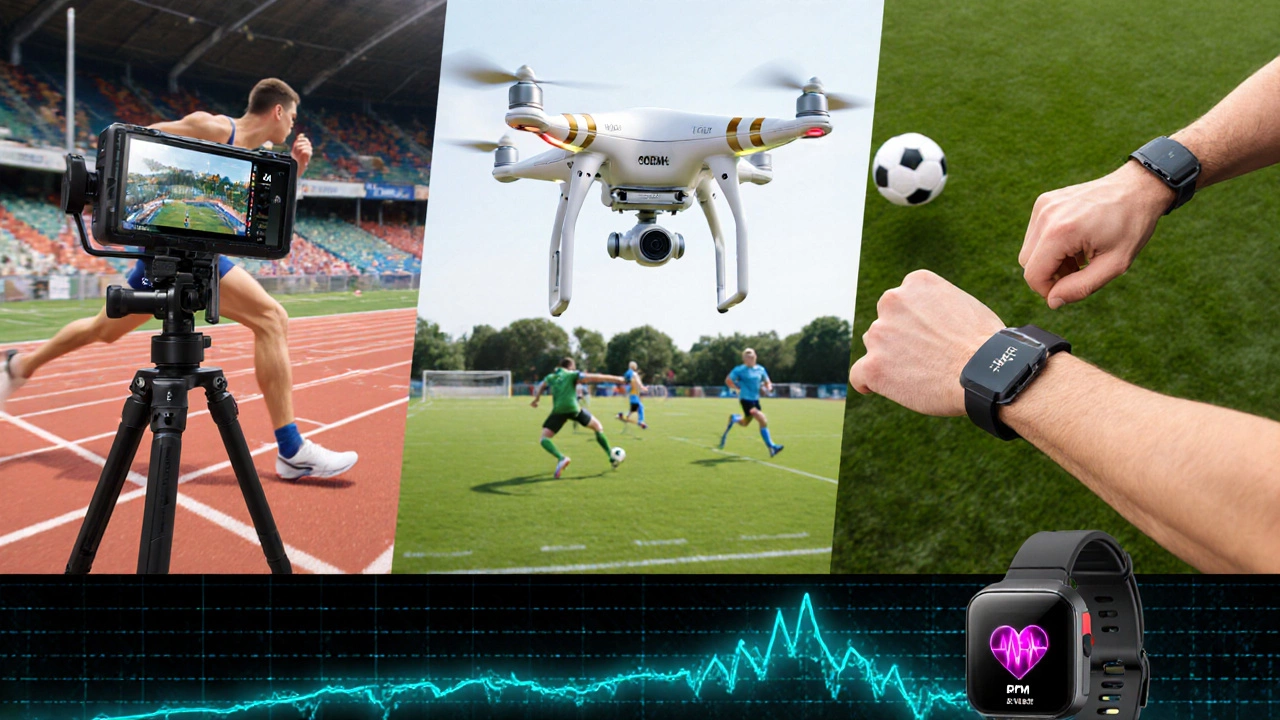
Force & Pressure Measurement: Plates and Mats
Ground‑reaction forces reveal how efficiently an athlete transfers energy. A Force Plate is a rigid platform equipped with load cells that measures vertical, mediolateral, and anteroposterior forces at up to 1,000Hz. Jump testing on a force plate provides metrics like peak power, take‑off velocity, and asymmetry indices.
When the setting is a field or court, Pressure Mat offers a portable alternative. These mats contain an array of sensors that map pressure distribution across a foot or shoe, helping to identify pronation issues or fatigue‑related weight shifts.
Contextual Tools: Eye‑Tracking and LIDAR
Beyond raw movement, analysing where an athlete looks can unlock tactical insight. Eye‑Tracking Glasses are lightweight spectacles that record gaze direction at 60Hz, syncing with video footage to show exactly what the player sees. In basketball, coaches use eye‑tracking to train players on better court awareness and decision‑making.
For 3‑D environmental scanning, LIDAR Scanner is a laser‑based device that creates high‑density point clouds of a playing surface, useful for slope analysis on ski tracks or turf firmness on football fields. The data feeds into simulation software to model ball trajectories under varying conditions.
Choosing the Right Kit: Decision Criteria
Not every team needs a full suite of high‑end gear. Use these criteria to trim the list:
- Sport specificity: Team sports (soccer, rugby) benefit most from GPS & video; individual sports (track, swimming) lean on force plates and biomechanics cameras.
- Budget ceiling: Entry‑level GPS units start at £150, while a professional‑grade force plate can exceed £7,000.
- Data integration: Choose tools that export in common formats (CSV, C3D) to avoid manual conversion.
- Portability: Outdoor coaches often prefer battery‑operated, wireless devices; indoor labs can invest in wired, high‑precision setups.
- Support & training: Vendors that provide onboarding webinars reduce the learning curve dramatically.
Map each criterion against the equipment matrix below to see where your cost‑benefit sweet spot lies.
| Equipment | Primary Metric(s) | Typical Sport(s) | Price Range (GBP) | Key Advantage |
|---|---|---|---|---|
| Video Camera | Movement patterns, technique angles | All sports | £300‑£1,500 | High‑resolution slow‑motion |
| Drones | Overhead positioning, spatial coverage | Soccer, rugby, field hockey | £800‑£2,500 | Bird’s‑eye perspective |
| GPS Tracker | Speed, distance, heat maps | Soccer, rugby, GAA | £150‑£600 | Real‑time location data |
| IMU | Acceleration, angular velocity | Baseball, golf, cycling | £200‑£1,200 | Fine‑grained motion capture |
| Heart‑Rate Monitor | HR, HRV, training load | Endurance sports, HIIT | £60‑£250 | Physiological insight |
| Force Plate | Ground‑reaction force, power | Track & field, basketball | £4,000‑£9,500 | High‑precision kinetics |
| Pressure Mat | Pressure distribution, footfall | Running, skiing, rehab | £500‑£2,000 | Portable force mapping |
| Eye‑Tracking Glasses | Gaze direction, visual attention | Basketball, hockey, esports | £1,200‑£3,500 | Links perception to action |
Practical Checklist for a First‑Time Setup
- Define the core metric you want to improve (e.g., sprint speed, shot accuracy).
- Select one video solution (camera or drone) that fits your venue size.
- Pair GPS or IMU units with the chosen video to sync spatial data.
- Add a heart‑rate monitor for physiological context if training load is a concern.
- Invest in a force plate or pressure mat only if you need kinetic feedback.
- Test data export workflow before the first live session.
Next Steps / Troubleshooting
After you’ve bought the gear, here’s what to watch for:
- Sync issues: If video timestamps don’t match GPS logs, calibrate both devices to the same NTP server.
- Battery drain: High‑frame‑rate cameras and IMUs deplete power quickly; carry spare batteries or use external power packs.
- Signal loss: GPS can struggle under heavy canopy; consider indoor‑compatible local positioning systems (e.g., Ultra‑Wideband) for indoor courts.
- Data overload: Set realistic sampling rates - 10Hz is sufficient for most field sports; higher rates are reserved for lab biomechanics.
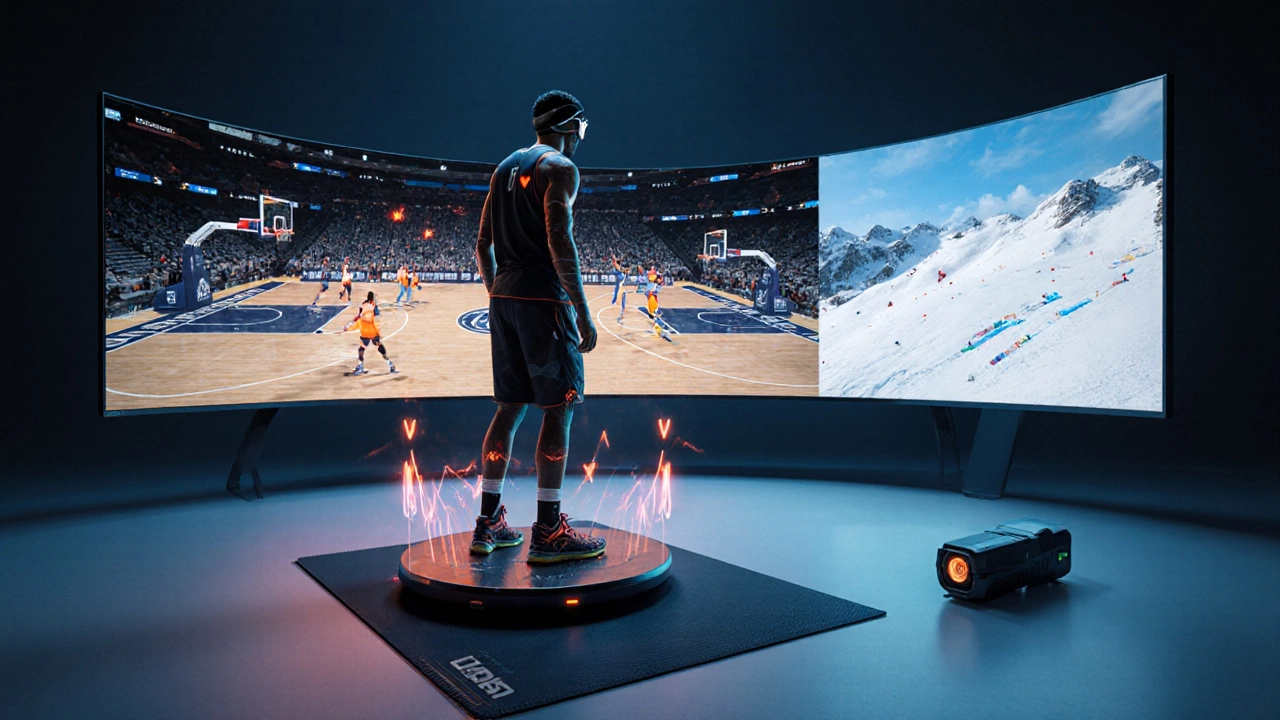
Frequently Asked Questions
Which device gives the most accurate speed measurement?
A high‑frequency GPS tracker (10Hz or above) is generally the most accurate for outdoor speed, providing error margins under 0.2km/h. For short sprints indoors, a radar gun or laser‑based timing gate is even more precise.
Do I need a force plate for beginner runners?
Not usually. A pressure mat or even a simple video analysis can reveal gait issues for most beginners. Save a force plate for advanced sprint coaches or injury‑rehab specialists.
Can I use a smartphone camera instead of a dedicated video camera?
Yes, if the phone records at least 60fps in 1080p and you attach a stabilizer. The downside is limited optical zoom and less robust low‑light performance.
What’s the best way to combine heart‑rate data with video?
Export the HR data as a CSV file with timestamps, then import it into your video‑analysis software as an overlay track. Most platforms let you plot BPM alongside playback, making it easy to spot spikes during high‑intensity drills.
Are eye‑tracking glasses worth the investment for a youth team?
Usually not. The cost‑benefit ratio favors older, elite athletes who need to refine decision‑making under pressure. For youth, focus on video and basic GPS before adding eye‑tracking.
By matching the right hardware to your sport’s demands, you’ll turn raw numbers into clear, actionable insights. That’s the essence of modern sports analysis - and the backbone of any performance‑driven program.
